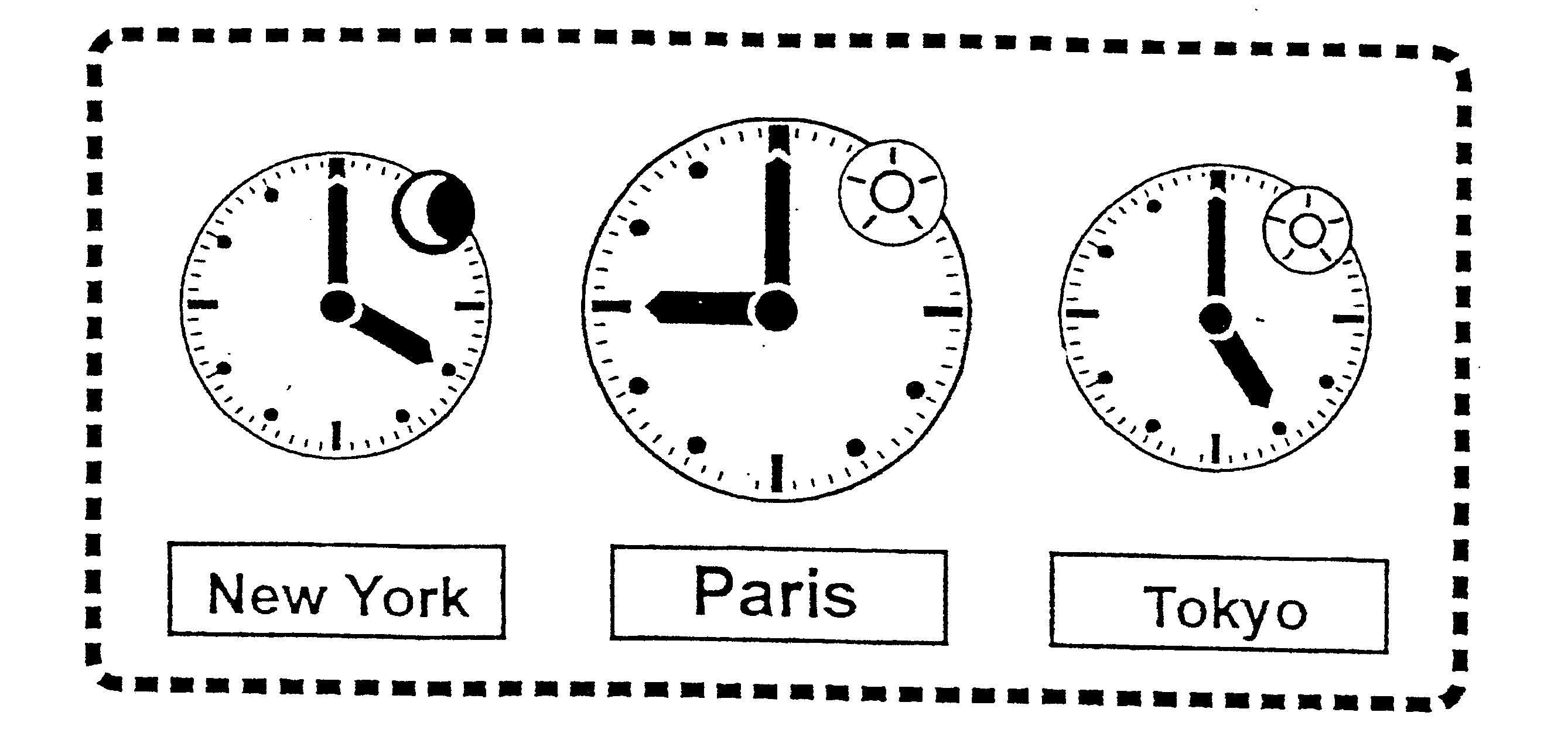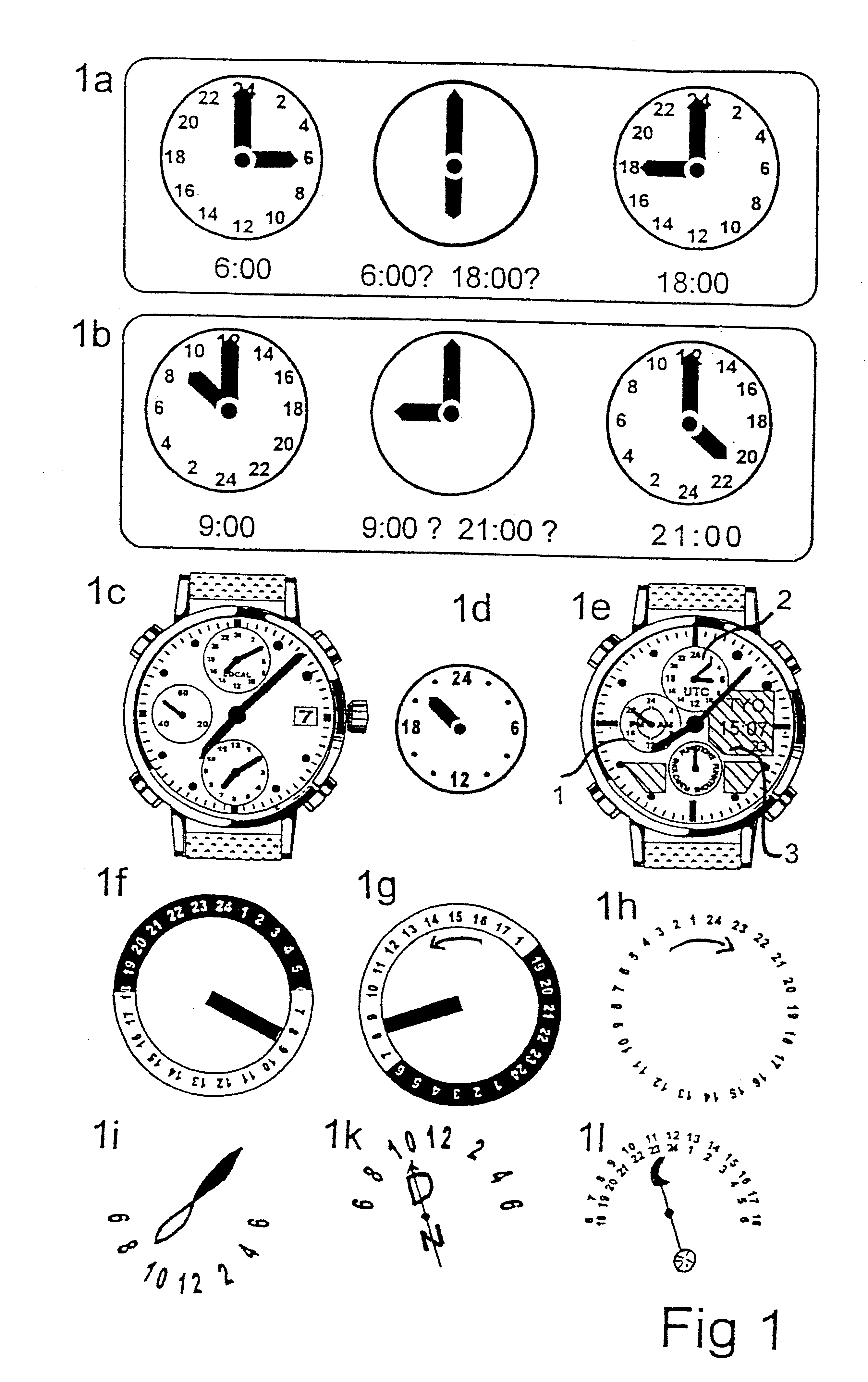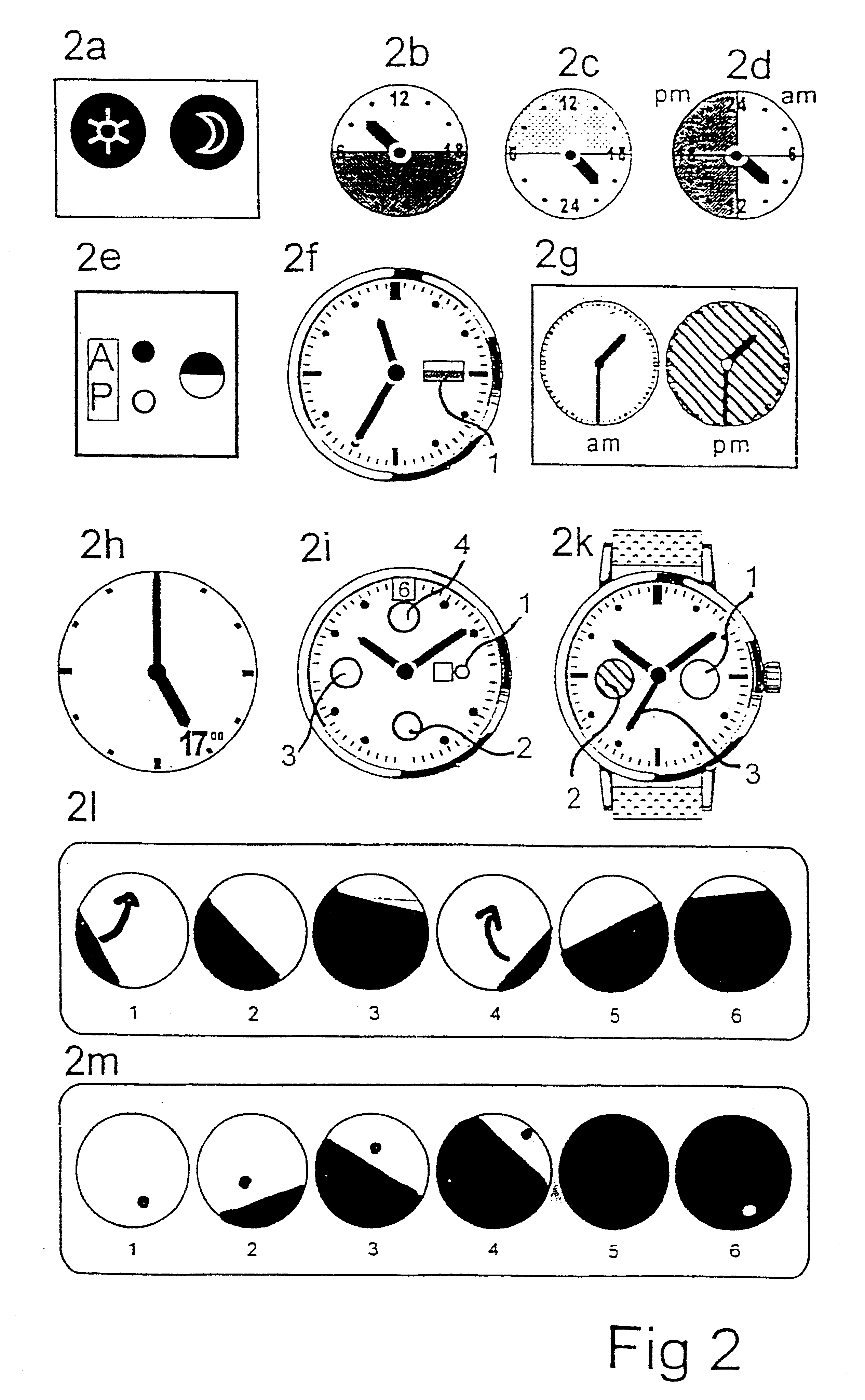Watch with a 24-hour watch face
a 24-hour watch face and watch face technology, applied in the direction of electromechanical clocks, time indication, timers, etc., can solve the problems of confusion, inability to read without figures, and inability to determine the time exactly,
- Summary
- Abstract
- Description
- Claims
- Application Information
AI Technical Summary
Problems solved by technology
Method used
Image
Examples
Embodiment Construction
The invention is based on the problem of creating a new 24-hour dial that permits an unambiguous presentation of the time over the entire day on the basis of our present ambiguous half-day dial, in such a way that it can be perceived unambiguously and rapidly by anyone around the globe, by young and old in any culture. This new dial is intended to permit the representation not only of world times in connection with towns such as at airports, stock exchanges, banks, travel agencies, reception halls, clocks and watches, but also permit both the representation of appointment times in connection with date and the general presentation of time during the entire day for shop-opening hours, representations of computer time or television stations. This dial is designed in such a way that it can also be combined in a variety of way, e.g. appointment times with world times, expiry times, etc.,--times that can all be represented with the same dial and hence can be rapidly compared with one anot...
PUM
 Login to View More
Login to View More Abstract
Description
Claims
Application Information
 Login to View More
Login to View More - R&D
- Intellectual Property
- Life Sciences
- Materials
- Tech Scout
- Unparalleled Data Quality
- Higher Quality Content
- 60% Fewer Hallucinations
Browse by: Latest US Patents, China's latest patents, Technical Efficacy Thesaurus, Application Domain, Technology Topic, Popular Technical Reports.
© 2025 PatSnap. All rights reserved.Legal|Privacy policy|Modern Slavery Act Transparency Statement|Sitemap|About US| Contact US: help@patsnap.com



